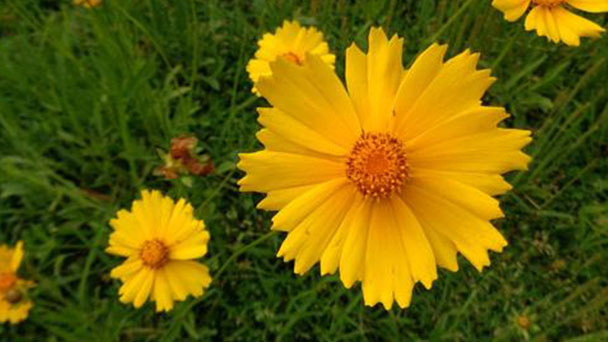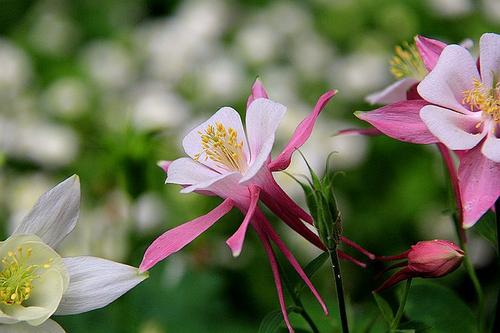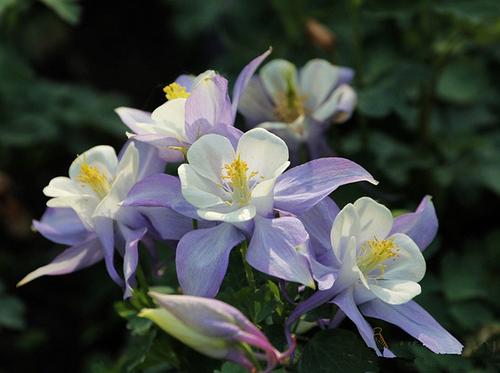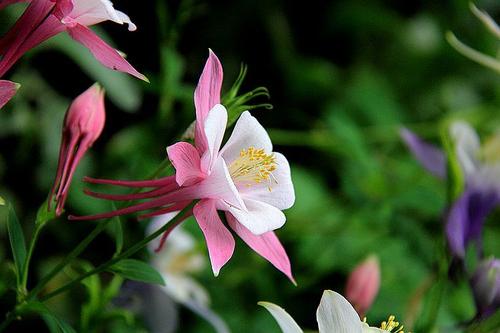Columbine (Aquilegia viridiflora) profile
Written by Maggie
Apr 12 2021

Columbine (Aquilegia viridiflora) is a plant in the genus Aquilegia in Ranunculaceae. Columbine is a perennial herb native to Europe and North America.
Columbine picture

Columbine info
| Botanical Name | Aquilegia viridiflora |
| Common Names | Columbine |
| Plant Type | Herbaceous perennial |
| Sun | Full sun to part shade |
| Flower color | Blue, orange, pink, purple, red, white, yellow |
| Native Area | Meadows and woodlands of northern hemisphere |
Morphological characteristics of Columbine
Columbine plants are 50-70 cm tall. The stem is erect with two or three compound leaves, bluish-green (similar to the leaves of many ferns). Columbine is corolla funnel-shaped, pendulous, petals 5, usually dark blue-purple or white, cultivars pink, yellow and other colors; Columbine has 5 sepals, the same color as petals. Follicles are dark brown.
The ecological habits of Columbine
Columbine is strong, hardy and likes a cool climate. Columbine likes fertile, moist, rich in humus, well drained soil. Higher air humidity is required, and maintenance should be conducted under semi-overcast conditions in summer.
How to grow and care for Columbine
Light
For the great flowering and healthiest plants, a spot in partial coloration is ideal. Columbine flowers can manage full solar in spring, however after they have flowered and are rebuilding their save of energy, they admire some color in summer's heat.
Soil
Any kind of soil can be used to develop columbine plants, although it does higher with sandier, loamier soils and now not pretty as properly in heavy clay soils.
Water
New Columbine plant life will want to be saved moist till they grow to be established. You'll recognize they are mounted when they begin inserting out a lot of new growth. Even then, hold your columbine flowers well-watered all through dry spells.
Temperature and humidity
Columbine is touchy to excessive temperatures, and a cooler climate will produce extra flowers.
Fertilizer
Fertilize the Columbine with water-soluble components monthly. This will inspire thick foliage and shiny flowers.
Pruning
Encourage extra flowering by way of deadheading the plant generally to get rid of diminished blooms. If you desire to keep away from self-seeding, reduce again the foliage and seed pods in the fall months.

Growing Columbine from seeds
It's no longer difficult to develop columbine plant life from seeds, however be conscious that they typically do not blossom till yr two. Additionally, the seeds want a three- to four-week bloodless spell earlier than germination will occur, which you can make certain by way of preserving the seed packets in the fridge earlier than sowing.
Plant the columbine seeds in moist soil in a warm, sunny indoor location. It will take the seeds about 30 days to germinate. Once the seedlings improve a pair of proper leaves and have reached 3 to 4 inches tall, transplant them outside.
Columbine pests & diseases
Columbine is prone to leaf miner, a pest that can disfigure the leaves however which hardly ever kills plants. Chemical pesticides can stop leaf miners, however poisonous controls are discouraged due to the fact the pests do now not kill the plant.2 Aphids are a lesser problem, treatable with insecticidal soaps and oils.
Foliage commonly declines via mid-summer at which factor it must be reduced to the ground.
Toxicity of Columbine
The seeds and roots of columbine flowers comprise cardiogenic toxins that can purpose extreme gastrointestinal signs and symptoms and coronary heart palpitations if eaten up in massive amounts. 1 The style is unpleasant, however, so it is rare that people or different animals eat it in massive ample portions to be dangerous.
Propagation of Columbine
Columbine is propagated by sowing and planting.
Columbine seeding is best done in a pot as soon as the seeds are mature. Sow sparsely and cover the pot with glass to keep the soil moist and shaded before emergence. The seedlings emerged after 1 month. The seedlings will blossom next year.
The best cultivars of Columbine are usually divided in March to April or August to September, but autumn is better.
Columbine seedlings can be colonized at about 10cm, with row spacing of 30 ~ 40cm. Top dressing should be applied before flowering. Shade is needed in summer. Cold areas should be slightly covered in winter. After 3 years, the plant is easy to decline, so it should be divided in time to promote its renewal.
Species taxonomy of Columbine
Cultivated varieties of Columbine are:
White Columbine: The flowers are white.
Black Columbine: Flowers deep blue-purple.
Double Columbine: double multicolored.
Snow Columbine: Pure white flowers, abundant, robust growth.
Columbine: Large flowers, sepals pale purple or bright purple, petals bluish-purple with white margins.
Columbine: The leaves have yellow spots.
Columbine distribution area
Columbine is native to Europe and Siberia.Herbs perennial. It likes warm and humid climates, and is afraid of high temperatures in summer. Columbine should grow in sandy loam with good drainage. Columbine is fertile, rich in humus, moist, well drained soil. Columbine is suitable for higher air humidity, summer is suitable for half shade.
Function of Columbine
Columbine is a fine garden flower with unusual leaves and beautiful flowers, suitable for flower beds, flower paths, etc. The flower branches can be cut.

Latest Updated
- Benefits of Bugleweed - 7 Science-backed Health Benefits
- Bugleweed Dangers & Side Effects - Is It Poisonous?
- How to Plant Evergreen Trees - What You Should Know
- When to Plant Evergreens - Grow Guide for Evergreen Trees
- 12 Wonderful Evergreen Shrubs for Your Garden
- 12 Popular Evergreen Plants with Pictures for Beginners
- When And How To Prune A Lilac Bush Like a Pro
- How to Grow & Care for Lilac Vine (Hardenbergia Violacea)
- Japanese Lilac Tree (Syringa Reticulata) Care & Propagation Guide
- Shumard Oak Pros and Cons - What to Know
Popular Articles
- Winter maintenance of Antirrhinum Majus
- How to Grow Terminalia Mantaly Tree
- How to Grow and Care for Crossostephium Chinense
- How to grow Antirrhinum Majus in spring
- Peristeria Elata (Dove Orchid) Profile: Info & Care Guide
- Underwatered Snake Plant (Sansevieria Trifasciata) - Signs And How To Fix
- How to Care for Brazilian Jasmine Plant (Mandevilla Sanderi)
- How to Grow & Care for Graptopetalum Purple Delight in Summer
- Rosa Chinensis (China Rose): Plant Growing & Care Tips
- How to Care for Baby Sun Rose (Aptenia Cordifolia)